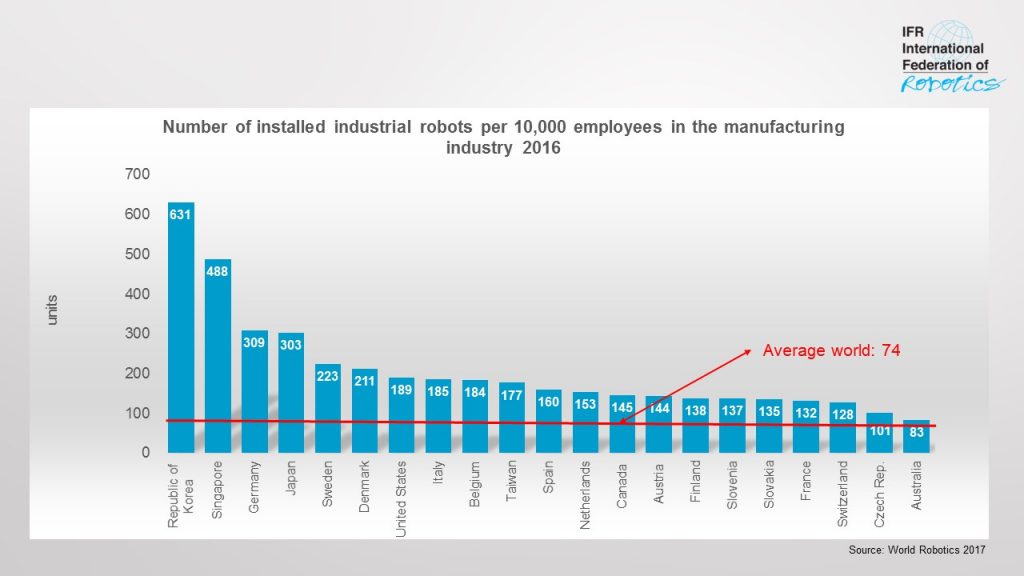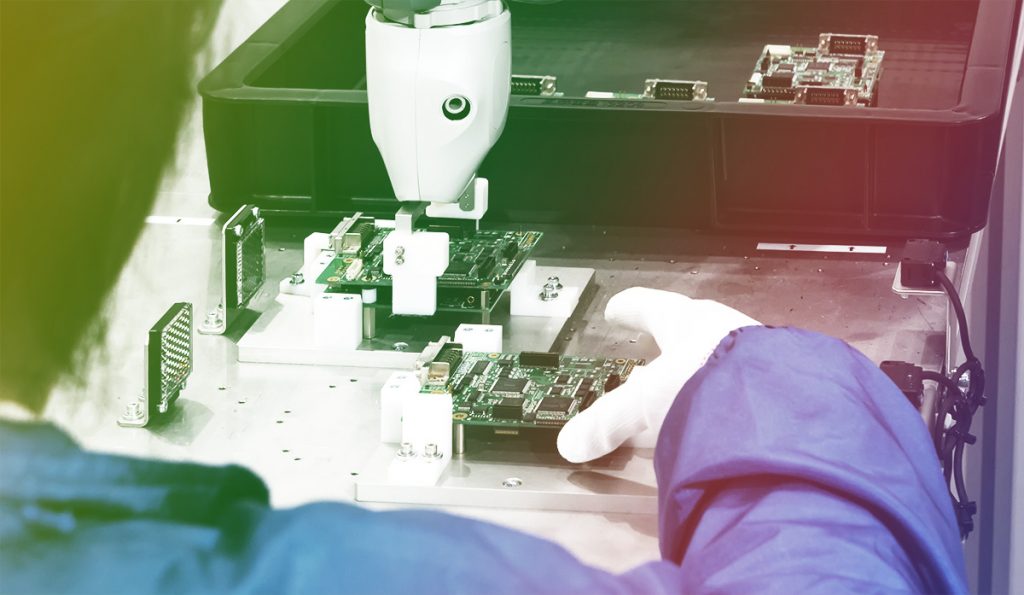How to Make the Best Cobot: Safety, Standards, and Sensors
The dramatic growth of cooperative robots in manufacturing is highlighting challenges and inspiring solutions
It was a Thursday in late January 1979, when 25-year-old Robert Williams climbed a storage rack inside the Ford Motor Company’s Michigan Casting Center, where the company manufactured V8 engines. Opinions differ about whether he was asked to scale the structure because a part count was incorrect, or because one of the one-tonne, rubber-wheeled transfer vehicles was moving pieces too slowly. Whatever the case, Williams was struck from behind by one of the mechanized vehicles on the third level and killed instantly, making him the first person on record to be killed by a robot.
His death was notable not simply for the fact that his family was awarded US$15 million in damages against Litton Industries, the machine’s manufacturer (Litton subsequently settled with Williams’s estate for an undisclosed amount) but for the fact that the accident occurred 58 years to the day after the premiere of Karel Capek’s play RUR at Prague’s National Theater. Translated as Rossum’s Universal Robots, Capek’s work is cited as introducing the word “robot” to the English language.
Today, according to the International Federation of Robots, there are approximately 63 robots for every 10,000 workers in Asia. In the US, it’s 84, and in the EU that ratio rises to 99. South Korea boasts the highest density of robots in the world, with 631 robots for every 10,000 workers.

Working with Robots: Measuring the Risk
While logic might dictate that replacing humans with robots would result in safer workplaces, in fact, as the number of robots in workplaces has increased, so have injuries and deaths. The United States Department of Labor’s Occupational Safety and Health Administration (OSHA) cites 24 robot/human interactions that led to injury or, in the case of 16 workers, death since 2000. That doesn’t include injuries such as those sustained in December 2018 by 24 Amazon employees in a Robbinsville, New Jersey, warehouse who were hospitalized after an automated “picker” punctured a nine-ounce can containing concentrated capsaicin, or bear repellant. The sensational details of that incident—including the fact that the incident involved one of the world’s largest companies and a substance used to ward off bears—propelled the story to international newspapers like The Guardian and network TV newscasts.
The fact is, the data about robot-related injuries is unreliable. According to the US National Institute for Occupational Safety and Health (NIOSH): “Currently, there is a lack of standard classification codes for robot-related injuries, which makes it hard to identify the frequency of incidents. Additionally, worker injury data systems do not include detailed information on how a robot-related fatality or injury incident occurred.”
In that regard, OSHA’s tracking systems lag behind what’s occurring in the workplaces it’s charged with overseeing, which is a rapid transition from what’s known as Industry 4.0—in which processes were automated and digital networking heavily utilized—to 5.0, which enables collaboration between human workers and machines.
Industry 5.0: Meet the Cobot
“Industry 5.0 will change the definition of the word ‘robot,’” wrote Saeid Nahavandi of the Institute for Intelligent Systems Research and Innovation at Deakin University in Australia. In a 2019 paper entitled “Industry 5.0—A Human-Centric Solution” he predicted: “Robots will not be only be a programmable machine that can perform repetitive tasks, but will also transform into an ideal human companion for some scenarios. Providing robotic productions with the human touch, the next industrial revolution will introduce the next generation of robot, commonly termed as cobots, that will already know, or quickly learn, what to do.”
While Ford’s once-futuristic Michigan Casting Center is now dedicated to turning out traditional automobiles like the Mustang and Lincoln Continental while the company retools it for electric vehicles—massive warehouses like those used by Amazon, Alibaba and Costco represent today’s just-in-time, digital economy; the leading edge of Industry 5.0. Unlike the transfer vehicle that performed one simple task three stories above the shop floor where Williams toiled, today’s cobots work alongside humans, performing a variety of functions.

Martin Krill, managing director of Hager Unternehmensbertatun, an executive search firm based in Frankfurt, Germany, stated in an Inside Logistics article: “Collaborative robots… work flexibly and directly with employees. This gives production a new dynamic and releases new potential: While the robot can take over standard processes, the human being is involved in other value-adding activities. The employee is relieved, because he uses the robot—the so-called cobot—as a multifunctional tool: such as a screwdriver, or packaging machine, or palletizer, and so on.”
While employees in the Industry 5.0 realm may well be relieved, Esben H. Østergaard, a technology director for Universal Robots, believes that “ensuring the safety of (working environments with cobots) becomes particularly vital when bearing in mind that 85 percent of manufacturers now consider the connected workforce being commonplace in manufacturing by 2020.”
Indeed, Universal Robots noted that, in 2018, the cobot market grew by more than 60 percent, nearing US$500 million in global sales. It projects that cobots will be responsible for global annual revenues of US$7.6 billion in productivity by 2027. Similarly, Loup Ventures, a venture capital firm based in Minneapolis and New York, predicts that cobots will account for 35 percent of all industrial robots by 2025.
And the growth of cobots won’t be confined to large manufacturers. Companies like Veo Robotics in Waltham, Massachusetts, are focusing on creating cobots in the US$30,000 range. One of its co-founders, Clara Vu, is all-too-aware of how smart machines can be made affordable enough to break out of the traditional factory floor; she wrote the programming language for the Roomba, the autonomous robotic vacuum cleaner that began to appear in homes in 2002.
While the worst a Roomba might do is frighten the family pet or suck up an errant personal object, cobots hold a greater threat for the people who work alongside them. OSHA cites seven common hazards for people working with robots:
- Control errors
- Unauthorized access
- Mechanical failures
- Environmental sources
- Power systems
- Improper installation
- Human error
With specific regard to the category of human error, OSHA notes that “many robot accidents do not occur under normal operating conditions but instead, during programming, program touch-up or refinement, maintenance, repair, testing, setup, or adjustment.”
Making Robots Safer
And if humans are responsible for many of the negative interactions they have with their mechanized collaborators, so too are we the ones who can be proactive in assessing and managing the risks associated with cobots. In a paper entitled “Working Safely with Robot Workers: Recommendations for the New Workplace,” published by the Centers for Disease Control and Prevention, authors Vladimir Murashov, Frank Hearl and John Howard stated: “Proactive risk management approaches developed for other emerging technologies such as nanotechnology could be applied to occupational robotic safety and health.”
Murashov, Hearl and Howard outlined four measures necessary to protect human co-workers:
- occupational safety and health professionals should be directly involved in the development of international standards aimed at ensuring safety of workplaces with human and robot workers;
- workplace safety standards for maintenance, operation, and interaction with human workers, of professional, personal service and collaborative (including managerial) robots should be developed;
- proactive approaches for establishing risk profiles of robotic workplaces should be developed; and
- redundant safety measures should be developed and operationalized to protect human workers while performing maintenance tasks on robot workers
Quality organizations have already made some efforts to outline new safety measures. As Østergaard noted: “Taking into account the changing nature of manufacturing processes globally, new guidelines on how to ensure the safety of human workers in collaborative robotic systems were published by the International Organization for Standardization (ISO) in February 2016.
“The ISO/TS 15066 guidelines were developed as a supplementary document to support the ISO 10218 ‘Safety Requirements for Industrial Robots’ standard (set in 2006)…. (It) is a comprehensive document which aims to help integrators of robot cells conduct risk assessments when installing collaborative robots.”
TS 15066 requires cobots to be equipped with four safety features:
- safety-rated monitored stop, which NIOSH’s Murashov said means, “the work stops when a worker would like to enter the workspace of the robot;”
- hand guiding, which allows the robot to move only under the control of a human;
- speed and separation monitoring, which requires the robot to automatically decrease its speed as a worker approaches; and
- power and force limiting.
Leading developers in the cobot field, like Veo Robotics, are also designing machines that are equipped with 3-D depth sensors and computer vision software, and they’re opening the technology to those who are building the cobots that will inhabit Industry 5.0. The company’s FreeMove Application Development Kit allows automation engineers to add intelligent vision and control software to their next-generation robots.
In the four decades since Robert Williams’s fatal encounter, attitudes toward working in proximity to robots have changed. In its second “AI at Work” survey, Oracle and the human resources firm Future Workplace found that 84 percent of employees in Singapore trust robots more than their managers.
“Safe, fluid human-machine interaction is the future of manufacturing,” wrote Veo’s CEO Patrick Sobalvarro on his company’s blog. “It will enable faster product cycles, increased productivity, better uptime, and reduced costs, all with improved ergonomics and safety.”



 A Close Look at Vision Guided Robotics (VGR)
A Close Look at Vision Guided Robotics (VGR)  A Team of Minions Builds their Robot Leader
A Team of Minions Builds their Robot Leader 